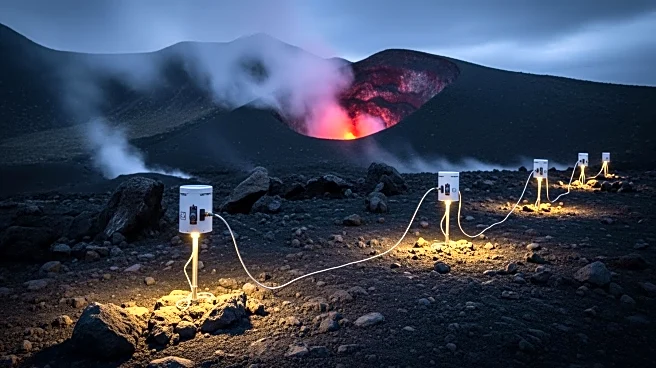What's Happening?
Researchers at Italy's National Institute of Geophysics and Volcanology have discovered a new method to predict volcanic eruptions at Mount Etna, Sicily's active volcano. By studying the 'b value' within
the Earth's crust, which measures the ratio of low- to high-magnitude earthquakes, scientists can monitor changes in crustal stress and track magma movement. This method allows for the anticipation of volcanic crises by detecting magma ascent months before eruptions, providing early warnings to nearby communities. Mount Etna, located on Sicily's eastern coast, is Europe's largest active volcano and is closely monitored due to its proximity to populated areas.
Why It's Important?
The ability to predict volcanic eruptions at Mount Etna is crucial for the safety of approximately one million people living on its slopes. Early detection of magma movement can prevent loss of life and property by allowing timely evacuations and preparations. This advancement in volcanic monitoring could serve as a model for other active volcanoes worldwide, enhancing global volcanic risk management. The continuous eruptions of Mount Etna pose significant risks to the local economy, infrastructure, and environment, making this research vital for sustainable living in the region.












